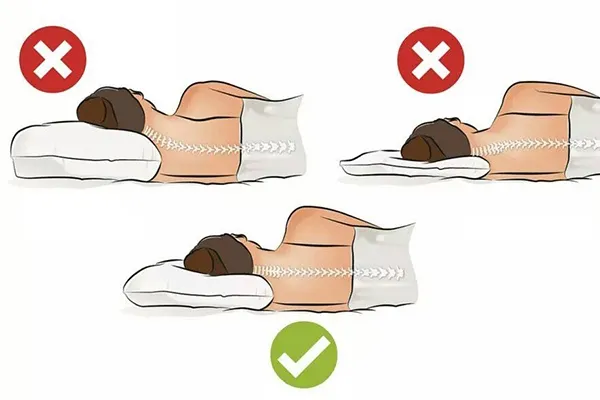Selecting the right pillow is crucial for a good night’s sleep and overall well-being. A proper pillow not only provides comfort but also plays a significant role in maintaining the correct alignment of your neck and spine, thereby reducing the risk of neck and back pain. This comprehensive guide will walk you through the key factors to consider when choosing the perfect pillow to enhance sleep quality and minimize discomfort.
Understand Your Sleep Position
Your preferred sleep position is the first and most important factor to consider when selecting a pillow. The way you sleep directly affects how much support your neck and spine need.
Back Sleepers: A medium-loft pillow that supports the natural curve of the neck is ideal. It should cradle the head without pushing it too far forward, maintaining proper alignment with the spine.
Side Sleepers: A firmer, higher-loft pillow is recommended to fill the gap between the ear and shoulder, ensuring the neck remains in a neutral position.
Stomach Sleepers: A soft, low-loft pillow is best, or you may choose to forgo a pillow altogether, to avoid straining the neck.
Consider Pillow Fill Materials
The material inside your pillow significantly impacts its feel, support, and durability. Here are the most common types of pillow fills:
Memory Foam: Contours to the shape of your head and neck, providing personalized support. Ideal for those with specific pain points, though it may retain heat.
Latex: Offers firm support and maintains its shape better over time. It is also hypoallergenic and breathable, making it a good choice for those with allergies.
Down/Feather: Soft and moldable, allowing for easy adjustment of thickness and shape. However, it may not provide enough support for some people and can trigger allergies.
Polyester: An affordable and lightweight option, though it tends to flatten quickly and may need to be replaced more often.
Buckwheat: Filled with buckwheat hulls, these pillows offer adjustable support and good airflow, though they can be noisy and heavy.
Evaluate Pillow Loft and Firmness
The loft (height) and firmness of a pillow should align with your sleep position and personal preferences.
Low Loft (Less than 3 inches): Best for stomach sleepers or those who prefer a flatter pillow.
Medium Loft (3 to 5 inches): Suitable for back sleepers, offering a balance between support and comfort.
High Loft (More than 5 inches): Ideal for side sleepers, providing the necessary height to keep the neck aligned with the spine.
Pillow firmness is subjective and should be chosen based on comfort and the level of support required. For instance, side sleepers may prefer firmer pillows, while stomach sleepers might opt for something softer.
Pillow Shape and Special Features
Consider whether a standard pillow shape or an ergonomic design is better suited to your needs.
Standard Pillows: Traditional rectangular pillows that come in various sizes and firmness levels.
Contour Pillows: Designed with a dip in the middle and raised edges, these pillows support the natural curve of the neck and are ideal for back sleepers.
Cervical Pillows: Specifically designed to support the neck and reduce pain, making them a good choice for those with chronic neck pain or cervical issues.
Cooling Pillows: Infused with gel or made from breathable materials to prevent overheating during sleep, suitable for those who sleep hot.
Assess Durability and Maintenance
The longevity of a pillow depends on its materials and how well it is maintained. Memory foam and latex pillows tend to last longer than polyester and down alternatives. It’s essential to follow the manufacturer’s care instructions, which may include regular fluffing, airing out, or using a pillow protector to extend the life of your pillow.
Test Before You Buy
If possible, try out pillows in-store to see how they feel under your head and neck. This can give you a better idea of the comfort and support they offer. Many retailers also offer trial periods, allowing you to test the pillow at home and return it if it doesn’t meet your expectations.
Consider Your Health Needs
If you suffer from allergies, choose hypoallergenic pillows made from materials like latex or memory foam. Those with chronic neck or back pain should consider ergonomic or cervical pillows designed to provide targeted support and alleviate discomfort.
Price vs. Value
While it might be tempting to choose a cheaper option, investing in a high-quality pillow is a wise decision for your health and comfort. A good pillow can last several years, making it a cost-effective choice in the long run.
Conclusion
Choosing the right pillow is essential for enhancing sleep quality and reducing neck and back pain. By understanding your sleep position, considering different materials, and paying attention to loft, firmness, and special features, you can find a pillow that meets your specific needs. Remember, a well-chosen pillow is not just a sleep accessory but an investment in your overall health and well-being.
4o

